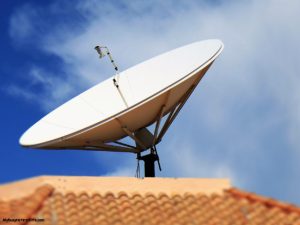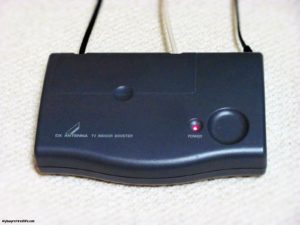What Happened To Free TV


C Band Satellite Antenna
What happened to free tv? It wasn’t too long ago that the rooftops of the cities were covered in television antennas. There were 3 networks from which to choose our television watching. Then the cable era arrived and a sudden bloom of new networks along with it. After that, the satellite systems came along and again another bloom of new networks. Now it’s the digital era where we can custom order television over the internet. Is there still room for the old antenna system?
OTA Television
One thing to know is that the lawmakers mandated that the over the air or OTA television broadcasters could join the cable and satellite systems, but they still had to broadcast OTA without charging viewers. With the digital conversion from analog, the OTA broadcasters had additional channels they could use. So instead of 5 major local networks, there are the 5 originals and maybe another 5-20 channels(just a guess). The question for the broadcasters was what to fill the time with these new venues.

Antenna Booster
Welcome the birth of smaller networks that specialize in a narrow niche type broadcasting. One example would be the old syndicated television shows. Some of these small networks make it to the cable and satellite systems, but there are a lot that do not. Still, they are there, but how to view them. Remember that old antenna system. There are a large number of networks available for free to watch if you just have an antenna. Well, what kind of equipment do you need?
What Equipment Do I Need?
The equipment list is pretty small. The antenna, and a television that has a coax connection or F connection and depending on your location from the broadcasters maybe amplification. Of course, you will need some RG6 coax cable. This is currently the best grade for home use.
The Antenna
When shopping for an antenna one of the important features to look for is the reception range. But don’t take the reception range to mean that if it says 150 miles you will get signals from 150 miles away. There are a lot of factors that impact what you will finally be able to see. Trees, buildings, mountains, antenna height, all will work to degrade that signal. Your choice of cable, connectors, cable length will also have impacts. Whether the antenna will receive VHF or UHF signals or both is also important as broadcast stations can use either of these frequencies.
Amplification
Amplification can be a good option. Amplification boosts a poor signal so that it can be seen, provided that there was enough signal to start with. A good amplifier will upgrade your signal and deliver it to your television with little signal loss. Some amplifiers start the amplification at the antenna and push the signal to the television. Other amplifiers take the signal where they plug in, amplify it and then push it to the television. You will need to decide how much amplification you need and where it starts.
So all you would need is an antenna and a television with a connection for the antenna? Having a major city or two nearby is always a good thing as they usually will have broadcast stations. After that, the antenna options for receiving local broadcasts depends on whether the stations are close by or farther away. The farther away, the bigger and more directional the antenna must be to acquire the signal.
So if you mainly watch local television you may want to start thinking old school antennas because free TV is alive and even better.
Related Article: Building an OTA Antenna system
If you want to find out what OTA stations are available in your area?
Related Article: A Television guide for your tablet
